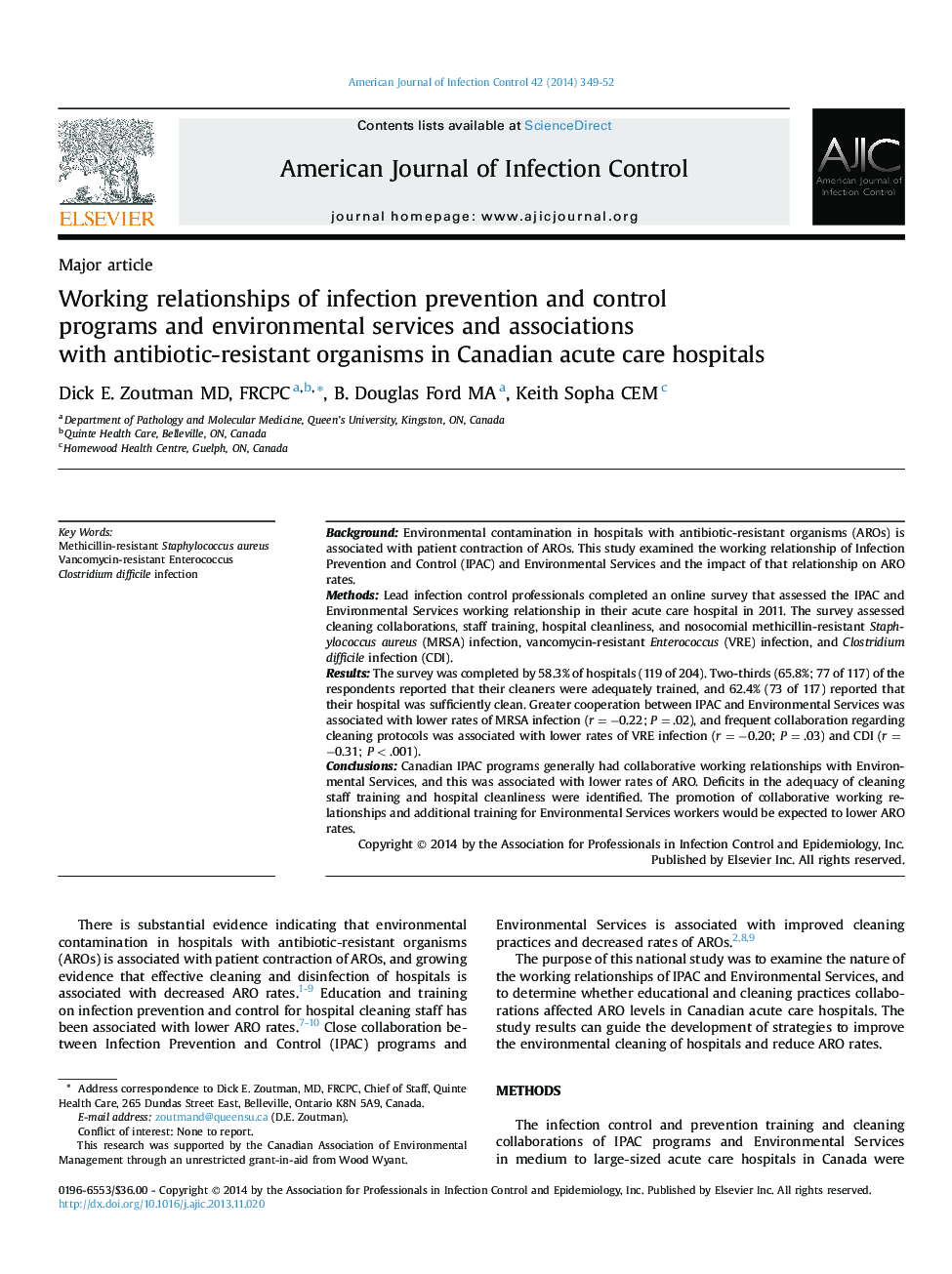| Article ID | Journal | Published Year | Pages | File Type |
|---|---|---|---|---|
| 2639300 | American Journal of Infection Control | 2014 | 4 Pages |
BackgroundEnvironmental contamination in hospitals with antibiotic-resistant organisms (AROs) is associated with patient contraction of AROs. This study examined the working relationship of Infection Prevention and Control (IPAC) and Environmental Services and the impact of that relationship on ARO rates.MethodsLead infection control professionals completed an online survey that assessed the IPAC and Environmental Services working relationship in their acute care hospital in 2011. The survey assessed cleaning collaborations, staff training, hospital cleanliness, and nosocomial methicillin-resistant Staphylococcus aureus (MRSA) infection, vancomycin-resistant Enterococcus (VRE) infection, and Clostridium difficile infection (CDI).ResultsThe survey was completed by 58.3% of hospitals (119 of 204). Two-thirds (65.8%; 77 of 117) of the respondents reported that their cleaners were adequately trained, and 62.4% (73 of 117) reported that their hospital was sufficiently clean. Greater cooperation between IPAC and Environmental Services was associated with lower rates of MRSA infection (r = −0.22; P = .02), and frequent collaboration regarding cleaning protocols was associated with lower rates of VRE infection (r = −0.20; P = .03) and CDI (r = −0.31; P < .001).ConclusionsCanadian IPAC programs generally had collaborative working relationships with Environmental Services, and this was associated with lower rates of ARO. Deficits in the adequacy of cleaning staff training and hospital cleanliness were identified. The promotion of collaborative working relationships and additional training for Environmental Services workers would be expected to lower ARO rates.
